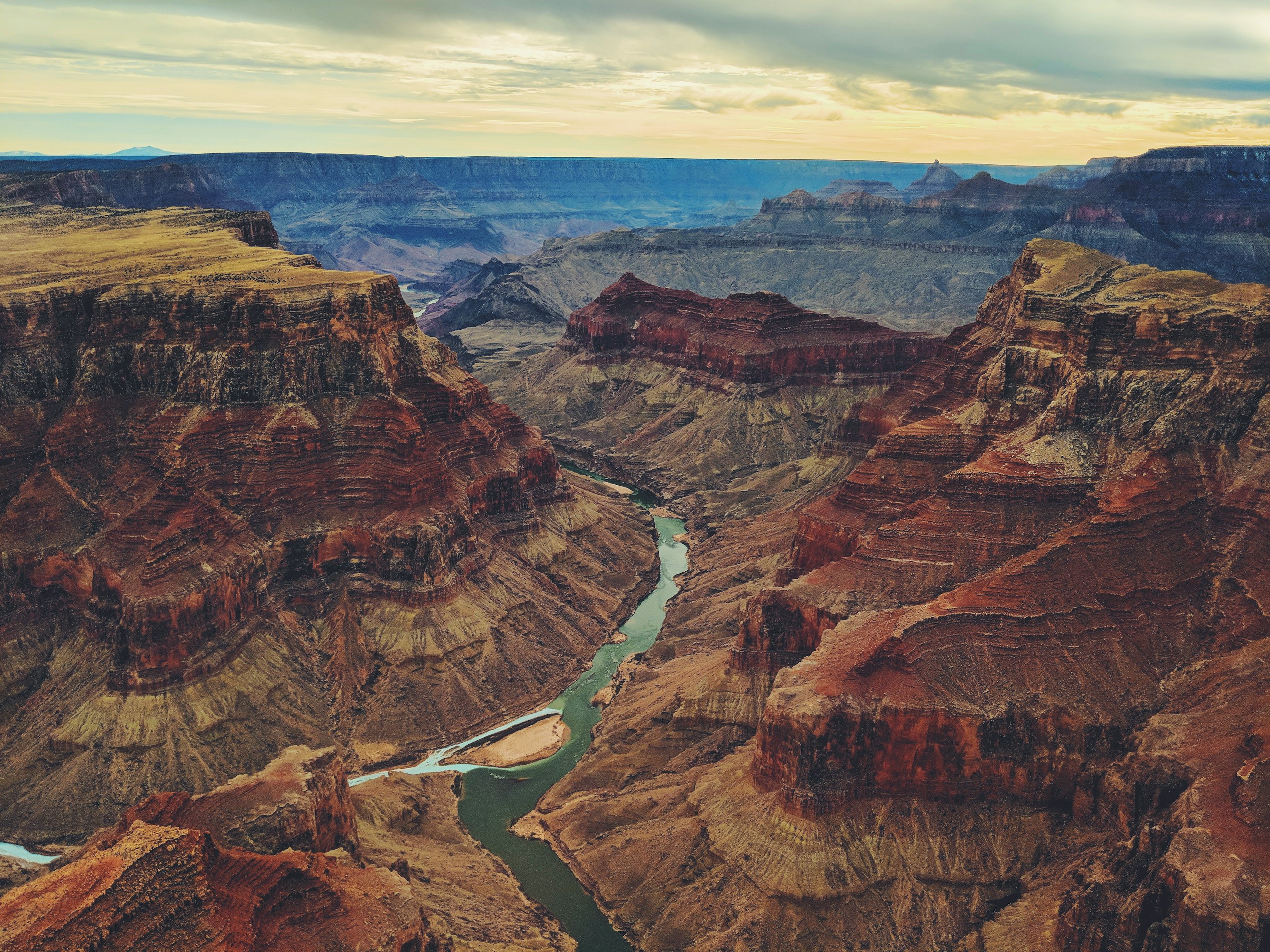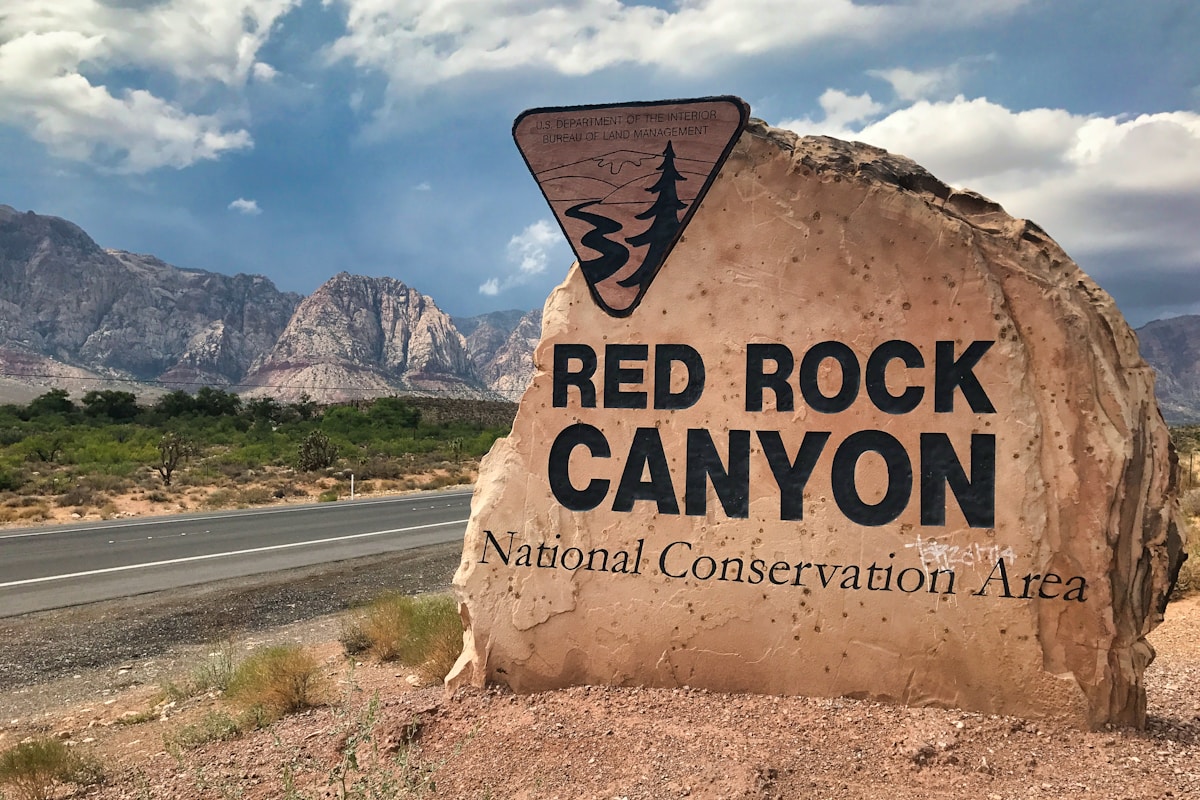As travel trends change throughout the years, the Grand Canyon remains one of those timeless destinations high on everyone’s list, and for good reason. This natural wonder offers something for everyone, at any time of year. Due to its immense size and the wide array of activities to see and do here, it is best to utilize a Grand Canyon trip planning guide like this one to make the most of your time! This Grand Canyon National Park planning guide includes all the logistics, planning tips, and best things to do in every season!
Location of Grand Canyon National Park

Grand Canyon National Park is located in northern Arizona. This National Park is divided into two regions: the North Rim and the South Rim. These two rims each possess distinctive characteristics, as well as being located nearly 5 hours apart. For these reasons, it is important when planning a Grand Canyon trip to consider the logistics and appeal of both regions when determining your itinerary.
Closest Town(s) to the North Rim of Grand Canyon National Park:
- Jacob Lake, AZ: 1 hour
- Fredonia, AZ: 1 hour and 30 minutes
- Kanab, UT: 1 hour and 30 minutes
Closest Town(s) to the South Rim of Grand Canyon National Park:
- Tusayan, AZ: 15 minutes
- Williams, AZ: 1 hour
- Flagstaff, AZ: 1 hour and 30 minutes
Closest Airport(s) to Grand Canyon National Park:
- Grand Canyon National Park Airport (Tusayan, AZ): 15 minutes
- Flagstaff Pulliam Airport: 1 hour and 30 minutes
- Phoenix Sky Harbor International Airport: 3 hours and 30 minutes
- St. George Regional, UT: 4 hours
North Rim Versus South Rim

Because the two rims of Grand Canyon National Park are 5 hours apart, it is important to consider your itinerary and priorities when planning a Grand Canyon trip. If you have several days, it is possible to visit both rims. If you only have a day or two, it is ideal to choose one or the other. In that case, it is helpful to compare the two rims and know what to expect from each.
Overview of the North Rim
The North Rim of Grand Canyon National Park is far less visited than the South Rim. It is more remote and further from bigger towns and airports, thus harder to reach. There are also fewer accommodations, attractions, and other amenities. When compared to the South Rim, the North Rim is more forested and rustic. One of the biggest appeals to visiting the North Rim is the far fewer crowds, which means the opportunity to have more of the trails, campgrounds, and park buildings to yourself.
The North Rim does close in the winter (between October – May), so it is ideal to visit in the late spring, summer, or early fall. The North Rim is higher in elevation, receiving significantly more snowfall than the South Rim, hence the reason the park roads close in the winter. The higher elevation does have one big advantage though – cooler temperatures during the summer, which is considered peak season. While the South Rim gets much warmer in the summer, the North Rim remains mild and moderate throughout.
Overview of the South Rim
The South Rim of Grand Canyon National Park receives about 90% of the park’s annual visitors, nearly 5 million in total. There is so much to see and do here, but you will have to endure more crowds, especially during the peak summer season.
The South Rim is more visited largely because it is easier to access. There are larger towns and airports nearby, and there are plenty of options for lodging including hotels, National Park lodges, multiple campgrounds, and nearby vacation rentals. There is also a free park shuttle service on the South Rim, that carries visitors around to the various attractions in Grand Canyon Village. There are stunning trails to hike here, similar to the North Rim, but there are also additional activities specific just to the South Rim, like the Grand Canyon Skywalk and the Grand Canyon Railway.
Unlike the North Rim, the South Rim is open year-round. The peak season is summer, but that is also the hottest time of the year. If you are looking for some reprieve from the often scorching conditions in summer, the shoulder seasons of spring and fall are ideal, and there are also far fewer crowds.
What to Know Before You Go
- Entrance Fees: $35 per vehicle (good for 7 consecutive days)
- Hours: Grand Canyon National Park is open 24 hours a day daily (the North Rim is closed in winter)
- Best Time of Year to Visit the North Rim: late spring – early fall
- Best Time of Year to Visit the South Rim: late spring or early fall
- Pet Policy: pets are not allowed in park buildings or on trails
Grand Canyon Trip Planning Tips
- Make accommodations/reservations in advance
- Have a planned itinerary
- Bring plenty of water
- Bring hiking essentials for the trails
- Check the weather – both rims can receive snow and ice in winter, and high temperatures are worth monitoring in the summer
- Always stay on designated trails
- Monitor children at all times
- Leave no trace
- Respect wildlife
Best Things to Do in Grand Canyon National Park

No matter the season or region, there is always something for everyone at the Grand Canyon. There’s an epic network of trails, ranging in length and difficulty, as well as numerous overlooks along both rims. You can choose to camp overnight under one of the most impressive night skies in the multiple park campgrounds. There are also visitor centers, museums, and exhibits to peruse, and National Park lodges to visit and dine in. There’s the iconic Grand Canyon Railway, one of the most scenic ways to view the Grand Canyon. And of course, there are options for the more adrenaline-addicted visitor, including rafting tours, helicopter tours, and the glass sky bridge at Grand Canyon West.
Best Hiking Trails in Grand Canyon National Park
Arguably the biggest attraction at the Grand Canyon is its hiking trails. Some trails suit a wide variety of ages and abilities, from family-friendly hikes to some of the toughest hikes in the entire country! Both the North Rim and the South Rim offer their unique trail vibes, as well as some inner “corridor” trails that connect both the North and South Rims.
Best Hiking Trails on the North Rim
The Widforss Trail

This 10-mile roundtrip, relatively flat trail offers a welcoming combination of both shady forest canopy with stellar canyon views. The Widforss Trail parallels the North Rim, weaving through groves of towering ponderosa pines that open dramatically to panoramic views over the North Rim. The halfway point on the Widforss Trail is the most impressive overlook of all, Widforss Point. The blanket of forest retreats to a vista of 360-degree views here.
The North Kaibab Trail

The beginning of the North Kaibab Trail contains one of the most breathtaking sights in all of Grand Canyon National Park. Draped in stark red rock canyon and white and yellow aspen trees, the North Kaibab Trail plunges into the heart of the canyon, passing landmarks like Coconino Overlook, Supai Tunnel, the Redwall Bridge, and Ribbon Falls, before arriving at the bottom of the canyon at Phantom Ranch and Bright Angel Campground.
Due to the North Kaibab’s 28-mile roundtrip distance, it is often considered an ideal overnight backpacking candidate, as well as a connecting inner corridor trail for the epic Rim to Rim hike, a trek from one rim of the Grand Canyon to the other, often completed in one day. Rim to Rim hikers traditionally descend the North Rim via the North Kaibab Trail, before connecting to the Bright Angel Trail at the bottom of the canyon and ascending the South Rim wall.
The Rim to Rim hike is considered one of the toughest hikes in the U.S., one that requires following an intensive Rim to Rim training plan. But the incredible payoff is worth the effort – only about 1% of visitors ever complete a Rim to Rim, and seeing the Grand Canyon from a completely different view at the bottom is unforgettable!
Bright Angel Point Trail
This short, 0.5-mile paved nature trail leads to another one of the best viewpoints on the North Rim: Bright Angel Point. It is a fantastic option for those with younger children, or those with a shorter time frame looking to optimize on views!
The Cape Royal Trail
The Cape Royal Trail is similar to the Bright Angel Point Trail in many ways. It is a short, 0.6-mile roundtrip paved trail that leads to fantastic views from the Angels Window landmark. You can even see the Colorado River far below from the vantage point of Cape Royal.
Best Hiking Trails on the South Rim
The Bright Angel Trail

The Bright Angel Trail is one of the most popular trails in the park, as well as the most traveled inner corridor trail.
The Bright Angel Trail is a favorite because not only does it possess excitement and views, but it is easy to access. There are plenty of places to park near the trailhead, as well as the Visitor Center, dining, lodging, and other attractions.
The Bright Angel Trail is 19 miles roundtrip if you follow it to Bright Angel Campground at the bottom, but hikers can also choose to customize how much of the trail they want to hike by turning around at various spots, like the 1.5 or 3 Mile Resthouses, or the surprisingly verdant Havasupai Garden Campground, located halfway down the trail.
The other big draw to the Bright Angel Trail is the availability of water and bathrooms along the trail, something not every South Rim trail possesses. It is a very well-maintained trail, although there are obvious drop offs to be aware of, and several series of steep switchbacks to contend with, like the ominously named Devil’s Corkscrew.
The South Kaibab Trail
The South Kaibab Trail is considered the South Rim sister trail to Bright Angel. Like the Bright Angel Trail, the South Kaibab Trail is another of the inner corridor trails. It has a slightly shorter distance of 14 miles roundtrip, as well as a few other notable differences and similarities.
While the South Kaibab Trail arguably possesses the better views of the two, with landmarks like Ooh Aah Point and Cedar Ridge, it is harder to access. You cannot park a car at the trailhead, and the only way to access the South Kaibab Trailhead is by arranged drop off, or via the South Rim park shuttle, which departs regularly from Grand Canyon Village but only at certain times of the day.
While some hikers prefer the shorter roundtrip distance and slightly better views, the major thing to note about the South Kaibab Trail is that there is no water on the trail! For this reason, it is strongly advised to not ascend the South Kaibab Trail from the bottom, especially in the summer!
So if it is advised not to tackle the entire 7-mile ascension of the South Kaibab Trail, what is the alternative? When weighing the pros and cons of the South Kaibab Trail versus the Bright Angel Trail, many avid hikers decide on hiking what is referred to as a “Rim to River” hike, the shortened version of a full Rim to Rim hike. This hike takes advantage of the best of both South Rim corridor trails while avoiding the worst of them (no water availability on the South Kaibab Trail).
A Rim to River hike consists of hiking down the South Kaibab Trail to the bottom at Bright Angel Campground, then connecting the Bright Angel Trail for the hike up. It is a 16.5-mile long hike, but one that soaks in all the best qualities of both these South Rim trails.
The Rim Trail
The Rim Trail is the hands-down standout for all-inclusive, family-friendly, all-abilities hiking on the South Rim. While this trail is 13 miles long, paralleling the South Rim, it is paved and flat. It also passes directly by the park buildings, museums, exhibits, lodges, and dining options that line the South Rim. So you can hike, stop, hike, stop, and spend an entire day traversing the Rim Trail and enjoying everything along its path.
What makes this trail even better is that there are multiple South Rim shuttle stops along its route, so you can hop on and off to customize how much hiking you want to do on the Rim Trail. Many visitors choose to utilize the park shuttle to quickly access the handful of viewpoints located along the Rim Trail, like Mather Point, Yavapai Point, and Hopi Point. It is the perfect alternative to those that want to be mesmerized by the views, without hiking down into the canyon itself.
Visitor Centers
There are Visitor Centers located at both the North and South Rims. They are a must for any Grand Canyon trip, with opportunities to view exhibits, talk to park rangers, shop for gifts, participate in park programs, and learn more about the fascinating history and geology of this natural wonder!
National Park Lodges
Whether you are staying overnight or just paying a short visit to sightsee or dine, these historic buildings, located at both rims, are impressive in stature and historical roots.
The Grand Canyon Railway
This park icon operates out of nearby Williams, and is one of the most relaxing ways to experience the South Rim. The Grand Canyon Railway runs year round, offering never ending views from the comfort of your train seat!
The Grand Canyon Skywalk
With views as impressive and monumental as these, there are bound to be some creative ways to feed your adrenaline at the Grand Canyon. One of these ways is stepping into the glass encased Grand Canyon Skywalk, suspended 70 feet out over the South Rim!
Grand Canyon Helicopter Tours
If being suspended above the Grand Canyon from the Skywalk wasn’t enough, you can opt for even loftier views on a Grand Canyon helicopter tour. There are various tour guides that operate out of Grand Canyon National Park Airport, as well as Las Vegas.
Colorado River Rafting Trips
While it is never advised to swim in the Colorado River, one way to experience the Colorado is to take part in a river rafting trip. There are various tour operators offering numerous trip lengths, each providing a glimpse into the strongest force at work in the Grand Canyon
Lodging in Grand Canyon National Park
There are multiple accommodation options in Grand Canyon National Park, including National Park lodges, campgrounds, and nearby hotels and vacation rentals. It is always advised to make accommodation arrangements as far in advance as possible, especially for lodging located directly within the National Park.
Lodging Inside Grand Canyon National Park
The two best options for lodging within the park borders are park lodges and campgrounds, including some of these popular choices.
National Park Lodges
- Bright Angel Lodge (South Rim)
- El Tovar Hotel (South Rim)
- Kachina Lodge (South Rim)
- Thunderbird Lodge (South Rim)
- Maswik Lodge (South Rim)
- Grand Canyon Lodge (North Rim)
National Park Campgrounds
Below are some of the most sought after campgrounds within the park.
- Mather Campground (South Rim)
- North Rim Campground (North Rim)
- Cottonwood Campground (North Rim)
- Bright Angel Campground (North Rim)
- Havasupai Garden Campground (South Rim)
Phantom Ranch
Phantom Ranch is an overnight lodge located at the bottom of the Grand Canyon. Advance reservations are required and very difficult to obtain via the annual lottery process.
Lodging Outside Grand Canyon National Park
Whether you stay at the North or South Rim, all of the surrounding towns provide hotel and vacation rental options.
- On the North Rim, look for rustic accommodations at Jacob Lake, or further out in Fredonia or Kanab, Utah.
- On the South Rim, there are plenty of hotel and vacation rental options in Tusayan, Williams, and Flagstaff.
Spending time here in the outdoors will really get your blood pumping and show you the beauty of nature and of Arizona. It’s a great stop on any road trip through the west coast of the United States. Just make sure to plan ahead as you do not want to get lost out in those canyons.
This article originally appeared on The World Overload. Featured Photo Credit: Unsplash




